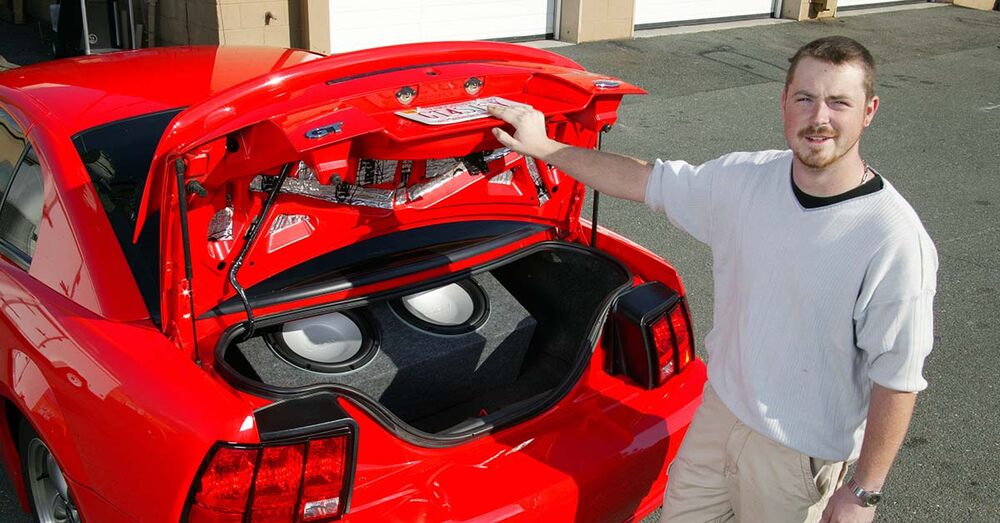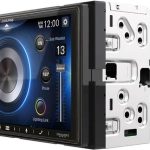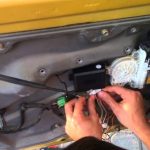Finding the right subwoofer size for your car can be a daunting task, with so many options available on the market. The size of the subwoofer is one of the most important factors to consider when upgrading your car’s sound system. Not only does it determine the volume and bass output, but it also affects the installation process and the overall look of your car’s interior. In this article, we will explore the various sizes of subwoofers available and help you determine which one is the best fit for your car. Whether you’re an audiophile looking for the ultimate sound experience or just looking for a simple upgrade, we’ve got you covered.
How do I know what size woofer I need?
The size of the woofer you need for your car depends on several factors, including the size of your vehicle, the amount of available space for the woofer, and your personal preferences in terms of sound quality and volume. Here’s a general guide to help you choose the right size woofer for your car:
Vehicle size: The size of your vehicle is a crucial factor in determining the size of the woofer you need. For example, a compact car is best suited for a small to medium-sized woofer, while a larger vehicle like an SUV or truck may require a larger woofer to fill the space and produce enough sound.
Available space: You also need to consider the amount of space you have available for the woofer in your car. This includes not only the physical space for the woofer itself but also the space for the necessary wiring and amplifier.
Sound quality and volume: The size of the woofer you choose will also depend on the type of sound you want to produce. Smaller woofers are typically better suited for clear, tight bass sounds, while larger woofers are better for producing more powerful and punchy bass.
It’s always a good idea to consult with an audio professional or the manufacturer of your car audio equipment to determine the best size woofer for your particular setup. They can help you make an informed decision based on your specific needs and preferences.
Is a bigger sub always better for my car?
It’s not always the case that a bigger subwoofer is better for your car. The size of the subwoofer that’s right for your car depends on several factors, such as the size of your car, the type of music you listen to, your personal preferences, and your budget.
A bigger subwoofer can provide more bass and low-end frequencies, but it also requires more power and a larger space to install. So, it’s important to consider the available space in your car, as well as your budget, before deciding on the size of the subwoofer.
Additionally, the type of music you listen to and your personal preferences also play a role in determining the size of the subwoofer you need. For example, if you primarily listen to music with a lot of bass, a bigger subwoofer might be a better choice, as it can provide more low-end frequency output.
There’s no one-size-fits-all answer to the question of whether a bigger subwoofer is always better for your car. It depends on your specific needs and preferences.
How do I choose a subwoofer for my car?
When choosing a subwoofer for your car, there are several key factors to consider to ensure that you get the best possible performance:
Size and Type: Determine the size of the subwoofer you need based on the available space in your car. The two most common subwoofer sizes for car audio systems are 8 inches and 10 inches. Additionally, there are two main types of subwoofers: sealed and vented. Sealed subwoofers are smaller and offer tight, accurate bass, while vented subwoofers are larger and provide more powerful bass output.
Power Handling: Make sure the subwoofer you choose can handle the power output of your amplifier. Check the RMS (Root Mean Square) power rating of the subwoofer and match it with the RMS power rating of your amplifier.
Sensitivity: Sensitivity refers to how efficiently a subwoofer converts power into sound. Higher sensitivity ratings mean the subwoofer will produce more volume with less power, while lower sensitivity ratings mean the subwoofer will require more power to produce the same volume.
Impedance: Impedance is the measure of a subwoofer’s electrical resistance. Most car subwoofers are either 4 ohm or 2 ohm impedance, and you should choose a subwoofer that matches the impedance of your amplifier.
Voice Coil Configuration: The voice coil is the part of the subwoofer that converts electrical energy into mechanical energy (sound). Subwoofers with dual voice coils allow for more wiring options and greater flexibility in configuring your car audio system.
Sound Quality: Finally, consider the sound quality you want from your subwoofer. Some subwoofers are designed to provide powerful, deep bass, while others are designed to offer tighter, more accurate bass reproduction.
By considering these factors, you’ll be able to choose the right subwoofer for your car audio system and get the best possible performance.
Subwoofer size chart
Here is a general guideline for choosing the appropriate subwoofer size for your car audio system:
8-inch subwoofers: Small cars with limited space, such as compact cars and coupes, often benefit from 8-inch subwoofers. They provide tight, accurate bass and take up minimal space in the trunk or cabin.
10-inch subwoofers: Most cars, including sedans, SUVs, and trucks, can accommodate 10-inch subwoofers. These subwoofers offer a good balance of space efficiency and bass output, making them a popular choice among car audio enthusiasts.
12-inch subwoofers: Larger cars and SUVs with more space in the trunk or cabin can accommodate 12-inch subwoofers. These subwoofers provide powerful, deep bass and are well-suited for those who want to build a high-performance car audio system.
15-inch subwoofers: For car audio enthusiasts who want the ultimate in bass output, 15-inch subwoofers are the way to go. These subwoofers require a lot of space, but they provide extremely powerful, deep bass that can shake the car and deliver a truly immersive audio experience.
Keep in mind that these are just general guidelines, and the best subwoofer size for your car will depend on several factors, including the amount of space you have available, the power output of your amplifier, and the type of music you listen to.
Should I get 2 ohm or 4 ohm subwoofers?
The choice between 2 ohm and 4 ohm subwoofers depends on the type of amplifier you’re using and the specific needs of your car audio system.
2 Ohm Subwoofers: 2 ohm subwoofers present a lower load to your amplifier, which means that the amplifier will have to work less to drive the subwoofer. This can result in more power being delivered to the subwoofer, which can translate into more volume and better performance. However, some amplifiers are not designed to work with 2 ohm loads, so it’s important to check the specifications of your amplifier before choosing a 2 ohm subwoofer.
4 Ohm Subwoofers: 4 ohm subwoofers present a higher load to your amplifier, which means that the amplifier will have to work harder to drive the subwoofer. However, most car audio amplifiers are designed to work with 4 ohm loads, so you won’t have to worry about compatibility issues. 4 ohm subwoofers are generally a good choice for those who want a more balanced, high-quality sound.
In general, if your amplifier is designed to work with 2 ohm loads, a 2 ohm subwoofer will likely provide better performance. However, if you’re using a standard car audio amplifier, a 4 ohm subwoofer is the safer choice. Be sure to consult the specifications of your amplifier to determine the best impedance for your system.
How do I match my amp to my subwoofer?
To get the best performance from your subwoofer and amplifier, you need to make sure that the amplifier is properly matched to the subwoofer. Here are some tips for matching your amp to your sub:
Check the Power Ratings: Make sure the power ratings of the subwoofer and amplifier are compatible. The amplifier should be able to deliver enough power to drive the subwoofer without distorting the sound. Check the RMS (Root Mean Square) power ratings of both the subwoofer and the amplifier and make sure the amplifier can deliver at least as much power as the subwoofer is rated to handle.
Check the Impedance: The impedance of the subwoofer and the amplifier should match. Most subwoofers have an impedance of 4 ohms or 2 ohms, while most car audio amplifiers are designed to work with 4 ohm loads. Make sure the subwoofer and amplifier have the same impedance.
Adjust the Gain: Adjust the gain on the amplifier so that it’s delivering the correct amount of power to the subwoofer. If the gain is set too low, the subwoofer will not receive enough power to perform properly, while if the gain is set too high, the subwoofer may be overdriven and produce distortion.
Consider the Crossover: The crossover on your amplifier helps to filter out frequencies that are outside the range of your subwoofer. If your amplifier has a built-in crossover, make sure it’s set to the correct frequency for your subwoofer. If your amplifier does not have a built-in crossover, consider using an external crossover to get the best performance.
By properly matching your amp and sub, you can ensure that your car audio system delivers the best possible performance.
Conclusion
In conclusion, the size of the subwoofer for your car depends on several factors, including the available space in your vehicle, your audio system’s power, and your personal preferences. A 10-inch subwoofer is a popular choice for many car audio systems, as it offers a good balance between size, performance, and affordability. However, if you have more space and want a more powerful bass, you may consider a 12-inch subwoofer. Before making your final decision, it is advisable to consult with an audio professional or do some research to find the best subwoofer that fits your specific needs and budget.








